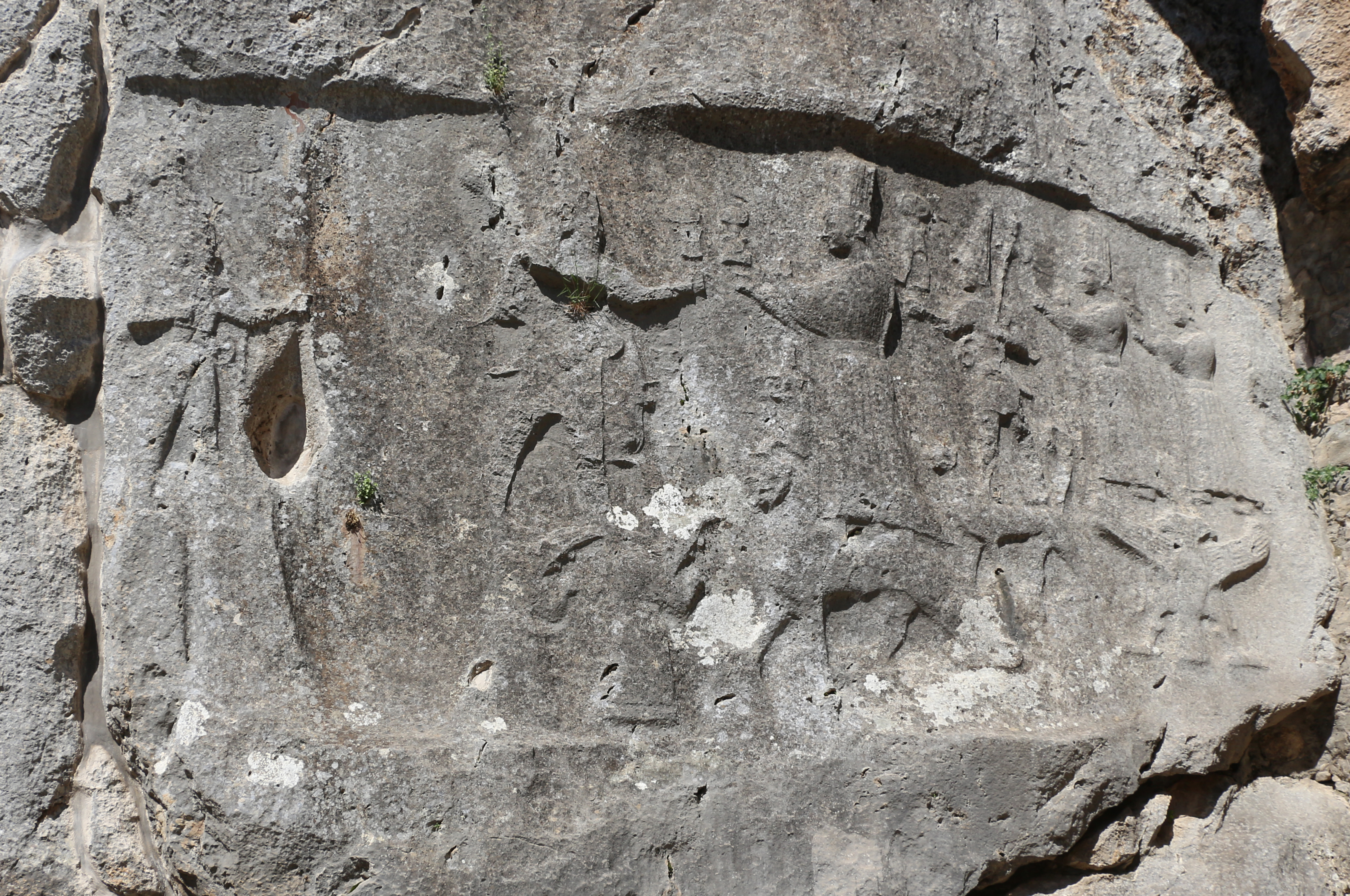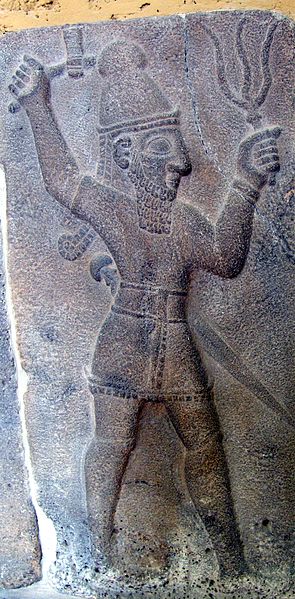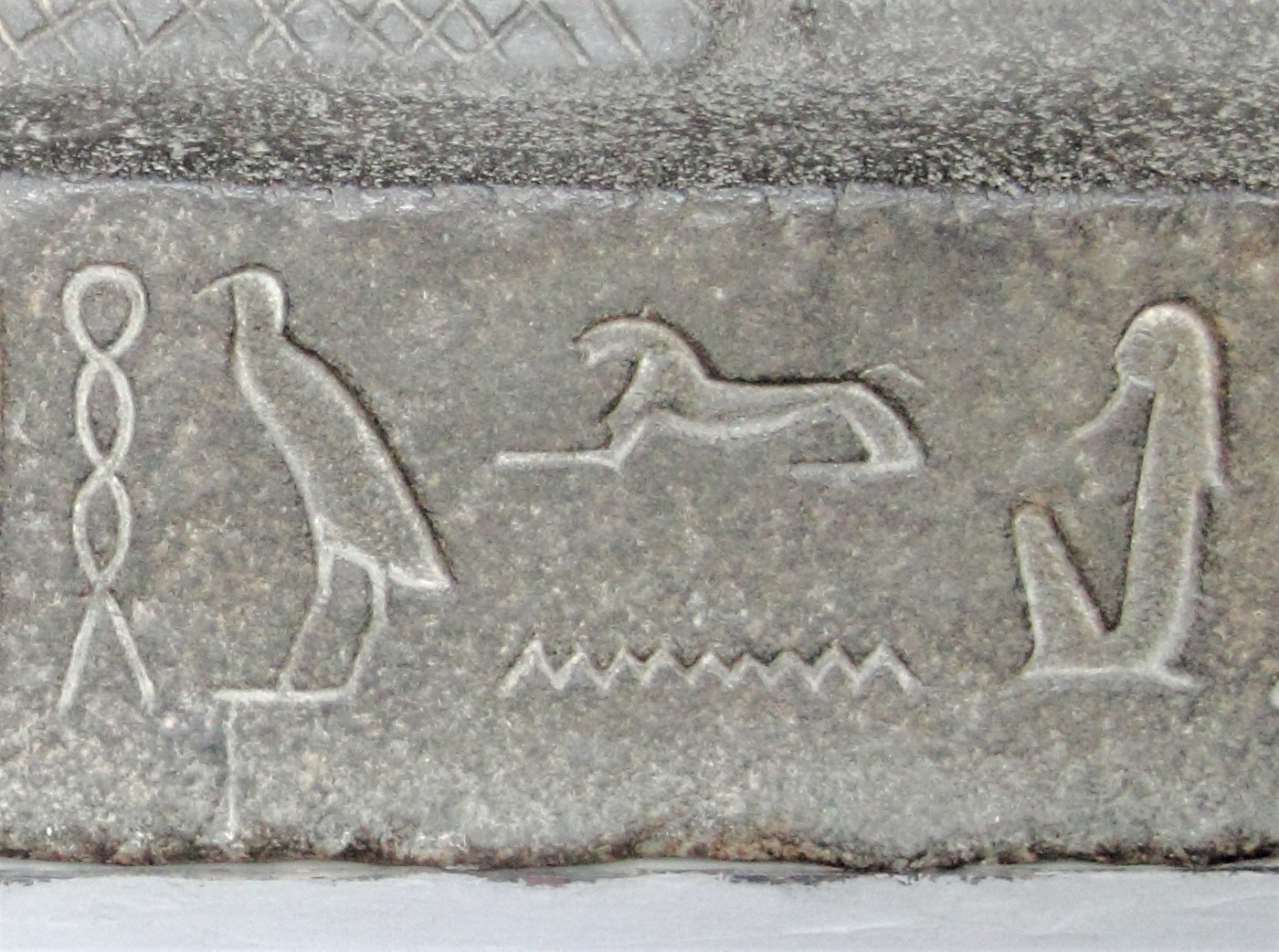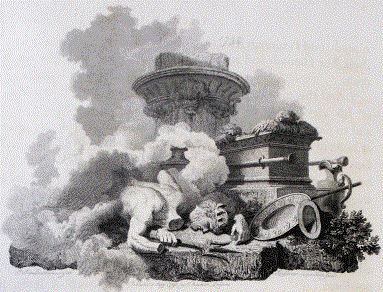|
Milku
Milku was a god associated with the underworld who was worshiped in the kingdoms of Ugarit and Amurru in the late Bronze Age. It is possible that he originated further south, as Ugaritic texts indicate he was worshiped in cities located in the northern part of the Transjordan region. He was also incorporated into the Hurrian pantheon under the name Milkunni. There is also evidence that he was worshiped in Hittite religion. It is possible that a closely related deity is also known from Mesopotamia. In the alphabetic script used in Ugarit, which does not always preserve vowels, Milku's name was written the same as the word ''malku,'' "king." As a result it is sometimes difficult to tell which of these two cognate words is meant. However, it is agreed that they were vocalized differently. It has been proposed that one of Milku's epithets was a pun referencing this writing convention. Name and character The name of an underworld deity written as ''mlk'' in the Ugaritic alphabetic scri ... [...More Info...] [...Related Items...] OR: [Wikipedia] [Google] [Baidu] |
Tishpak
Tishpak (Tišpak) was a Mesopotamian god associated with the ancient city Eshnunna and its sphere of influence, located in the Diyala area of Iraq. He was primarily a war deity, but he was also associated with snakes, including the mythical mushussu and bashmu, and with kingship. Tishpak was of neither Sumerian nor Akkadian origin and displaced Eshnunna's original tutelary god, Ninazu. Their iconography and character were similar, though they were not formally regarded as identical in most Mesopotamian sources. Origin It is commonly assumed that initially the tutelary deity of Eshnunna was Ninazu, worshiped in the temple Esikil. From the Sargonic period onward, Tishpak competed with Ninazu in that location, and the latter finally ceased to be mentioned in documents from it after Hammurabi's conquest. While similar in character, Ninazu and Tishpak were not fully conflated, and unlike Inanna and Ishtar or Enki and Ea were kept apart in god lists. It is generally agreed by scho ... [...More Info...] [...Related Items...] OR: [Wikipedia] [Google] [Baidu] |
Hurrian Pantheon
The Hurrian pantheon consisted of gods of varied backgrounds, some of them natively Hurrian, while others adopted from other pantheons, for example Eblaite and Mesopotamian. Like the other inhabitants of the Ancient Near East, Hurrians regarded their gods as anthropomorphic. They were usually represented in the form of statues holding the symbols associated with a specific deity. The Yazılıkaya sanctuary, which was Hittite in origin but served as a center of the practice of Hurrian religion, is considered a valuable source of information about their iconography. Hurrians organized their gods into lists known as ''kaluti'' or into similar lexical lists The cuneiform lexical lists are a series of ancient Mesopotamian glossaries which preserve the semantics of Sumerograms, their phonetic value and their Akkadian or other language equivalents. They are the oldest literary texts from Mesopotamia a ... as the Mesopotamians. The formal structure of the pantheon was most likely based ... [...More Info...] [...Related Items...] OR: [Wikipedia] [Google] [Baidu] |
Hurrian God
The Hurrian pantheon consisted of gods of varied backgrounds, some of them natively Hurrian, while others adopted from other pantheons, for example Eblaite and Mesopotamian Mesopotamia ''Mesopotamíā''; ar, بِلَاد ٱلرَّافِدَيْن or ; syc, ܐܪܡ ܢܗܪ̈ܝܢ, or , ) is a historical region of Western Asia situated within the Tigris–Euphrates river system, in the northern part of the F .... Like the other inhabitants of the Ancient Near East, Hurrians regarded their gods as anthropomorphic. They were usually represented in the form of statues holding the symbols associated with a specific deity. The Yazılıkaya sanctuary, which was Hittites, Hittite in origin but served as a center of the practice of Hurrian religion, is considered a valuable source of information about their iconography. Hurrians organized their gods into lists known as ''kaluti'' or into similar lexical lists as the Mesopotamians. The formal structure of the pantheon was most lik ... [...More Info...] [...Related Items...] OR: [Wikipedia] [Google] [Baidu] |
Gaṯaru
Gaṯaru (Ugaritic: ''gṯr'') or Gašru (Akkadian: '' dgaš-ru'', ''dga-aš-ru'') was a god worshiped in Ugarit, Emar and Mari in modern Syria, and in Opis in historical Babylonia in Iraq. While he is relatively sparsely attested, it is known that in Ugarit he was associated with the underworld, while in Mesopotamia he was understood as similar in character to Lugalirra or Erra. The name and cognates of it could also be used as an epithet of other deities, meaning "strong" or "powerful." The Ugaritic texts also attest the existence of dual and plural forms, Gaṯarāma and Gaṯarūma, used to refer to Gaṯaru himself in association with other deities, such as the moon god Yarikh and the sun goddess Shapash. In Ugarit The name of the god Gaṯaru (''gṯr'') is an ordinary Ugaritic adjective meaning "powerful," a cognate of Akkadian ''gašru'', "strong." No further cognates are known from any other Semitic languages. Gaṯaru was most likely associated with the underworl ... [...More Info...] [...Related Items...] OR: [Wikipedia] [Google] [Baidu] |
Haurun
Hauron, Haurun or Hawran (Egyptian: ''ḥwrwnꜣ'') was an ancient Egyptian god worshiped in Giza. He was closely associated with Harmachis, with the names in some cases used interchangeably, and his name as a result could be used as a designation of the Great Sphinx of Giza. While Egyptologists were familiar with Hauron since the nineteenth century, his origin was initially unknown, and only in the 1930s it was established that he originated outside Egypt. Today it is agreed that he was the Egyptian form of a god worshiped in Canaan and further north in the city of Ugarit, conventionally referred to as Horon ( uga, 𐎈𐎗𐎐, ''ḥrn''; Ḥôrānu or Ḥōrān) in scholarship. In the Ugaritic texts, Hauron appears as a deity associated with magic and exorcisms. This role is also attested for him in Egypt and in Phoenician sources from the first millennium BCE. The best known text focused on him is KTU 1.100, often interpreted as a myth, in which the Ugaritic sun goddess Sha ... [...More Info...] [...Related Items...] OR: [Wikipedia] [Google] [Baidu] |
Ugarit
) , image =Ugarit Corbel.jpg , image_size=300 , alt = , caption = Entrance to the Royal Palace of Ugarit , map_type = Near East#Syria , map_alt = , map_size = 300 , relief=yes , location = Latakia Governorate, Syria , region = Fertile Crescent , coordinates = , type = settlement , part_of = , length = , width = , area = , height = , builder = , material = , built = c. 6000 BC , abandoned = c. 1185 BC , epochs =Neolithic–Late Bronze Age , cultures = Canaanite , dependency_of = , occupants = , event = Bronze Age Collapse , excavations = 1928–present , archaeologists = Claude F. A. Schaeffer , condition = ruins , ownership = Public , public_access = Yes , website = , notes = Ugarit (; uga, 𐎜𐎂𐎗𐎚, ''ʾUgarītu''; ar, أُوغَارِيت ''Ūġārīt'' or ''Ūǧārīt'') was an ancient port city in northern Syria, in the outskirts of modern Latakia, discovered by accident in 1928 together with the Ugar ... [...More Info...] [...Related Items...] OR: [Wikipedia] [Google] [Baidu] |
Mot (god)
Mot ( phn, 𐤌𐤕 ''mūt'', he, מות ''māweṯ'', ar, موت ''mawt'') was the ancient Canaanite god of death and the Underworld. He was worshipped by the people of Ugarit, and by the Phoenicians. The main source of information about his role in Canaanite mythology comes from the texts discovered at Ugarit, but he is also mentioned in the surviving fragments of Philo of Byblos's Greek translation of the writings of the Phoenician Sanchuniathon and also in various books of the Old Testament. Forms of the name In Ugaritic myth, Mot (spelled ''mt'') is a personification of death. The word belongs to a set of cognates meaning 'death' in other Semitic and Afro-Asiatic languages. (Arabic language, Arabic موت ''mawt''; Hebrew (language), Hebrew מות (''mot'' or ''mavet''; ancient Hebrew ''muth'' or ''maveth''/''maweth''); Maltese language, Maltese ''mewt''; Syriac language, Syriac ''mautā''; Ge'ez language, Ge'ez ''mot''; Canaanite languages, Canaanite, Ancient Egypt, Eg ... [...More Info...] [...Related Items...] OR: [Wikipedia] [Google] [Baidu] |
Dagan (god)
Dagon ( he, דָּגוֹן, ''Dāgōn'') or Dagan ( sux, 2= dda-gan, ; phn, 𐤃𐤂𐤍, Dāgān) was a god worshipped in ancient Syria across the middle of the Euphrates, with primary temples located in Tuttul and Terqa, though many attestations of his cult come from cities such as Mari and Emar as well. In settlements situated in the upper Euphrates area he was regarded as the "father of gods" similar to Mesopotamian Enlil or Hurrian Kumarbi, as well as a lord of the land, a god of prosperity, and a source of royal legitimacy. A large number of theophoric names, both masculine and feminine, attests that he was a popular deity. He was also worshiped further east, in Mesopotamia, where many rulers regarded him as the god capable of granting them kingship over the western areas. Attestations of Dagan from coastal areas are much less frequent and come mostly from the northern city of Ugarit, where Dagan's cult had a limited scope. According to the Hebrew Bible, Dagan was als ... [...More Info...] [...Related Items...] OR: [Wikipedia] [Google] [Baidu] |
Shuwala
Shuwala (Šuwala) was a Hurrian goddess who was regarded as the tutelary deity of Mardaman, a Hurrian city in the north of modern Iraq. She was also worshiped in other Hurrian centers, such as Nuzi and Alalakh, as well as in Ur in Mesopotamia, Hattusa in the Hittite Empire and in the Syrian cities Emar and Ugarit. An association between her and the goddess Nabarbi is present in many Hurrian documents. It is also assumed that she was an underworld goddess, and she frequently appears alongside other deities of such character, Allani and dU.GUR, possibly a logographic spelling of the name of Nergal. Name Multiple writings of the name are attested: ''šu-a-la'' in documents from Ur from the Ur III period, ''šu-u-wa-a-la'', ''šu-u-wa-la'', ''šu-u-wa-u-la'', ''šu-wa-a-l''a and ''šu-wa-la'' in Hurro-Hittite documents from Hattusa; and ''ṯwl'' in a Hurrian text from Ugarit written in the local alphabetic script. The variety of spelling in the Hittite sources in particular is rega ... [...More Info...] [...Related Items...] OR: [Wikipedia] [Google] [Baidu] |
Psychopomp
Psychopomps (from the Greek word , , literally meaning the 'guide of souls') are supernatural creatures, spirits, entities, angels, demons or deities in many religions whose responsibility is to escort newly deceased souls from Earth to the afterlife. Their role is not to judge the deceased, but simply to guide them. Appearing frequently on funerary art, psychopomps have been depicted at different times and in different cultures as anthropomorphic entities, horses, deer, dogs, whip-poor-wills, ravens, crows, vultures, owls, sparrows, and cuckoos. In the case of birds, these are often seen in huge masses, waiting outside the home of the dying. Overview Ancient religion Classical examples of a psychopomp are the ancient Egyptian god Anubis, the deity Yama in Hinduism, the Greek ferryman Charon, the goddess Hecate, and god Hermes, the Roman god Mercury, the Norse Valkyries, the Aztec Xolotl, Slavic Morana and the Etruscan Vanth. Modern religion Heibai Wuchang, literally "Bla ... [...More Info...] [...Related Items...] OR: [Wikipedia] [Google] [Baidu] |
Nupatik
Nupatik, also known as Lubadag, was a Hurrian god of uncertain character. He is attested in the earliest inscriptions from Urkesh, as well as in texts from many other Hurrian settlements, and possibly continued to be worshiped as late as in the neo-Assyrian period. However, his functions remain uncertain. Name Nupatik s name is attested for the first time inscriptions of Hurrian king Tish-atal of Urkesh, where it is spelled syllabically as ''dLu-ba-da-ga'', rather than logographically, like these of other Hurrian gods in the same inscription. Numerous spellings of the name are known, including ''dNu-pa-ti-ik'', ''dLu-pa-ki-ta'', ''dNu-ú-pa-ti-ga'', ''dNu-pa-da-ak'', and more. He is also present in Hurrian texts from Ugarit, where his name is spelled in the local alphabetic script as ''nbdg'' (𐎐𐎁𐎄𐎂). Both the meaning and origin of his name are unknown. Character and attributes Nupatik was one of the "pan-Hurrian" gods, and as such was worshiped by various Hurrian ... [...More Info...] [...Related Items...] OR: [Wikipedia] [Google] [Baidu] |
Allani
Allani, also known under the Akkadian name Allatu (or Allatum) was the Hurrian goddess of the underworld, incorporated into Hittite and Mesopotamian pantheons as well. Name and epithets The name Allani is derived from a Hurrian word meaning "lady." Giving gods simple epithet-like names like Allani or Shaushka ("the great") was common in Hurrian culture. In 1980 Wilfred G. Lambert proposed that Allatum, who he understood as the same deity as Ereshkigal in origin, was in origin the feminine counterpart, and possibly wife, of the minor Sumerian underworld god Alla. Alla was worshiped in Esagi, a settlement whose location remains unknown, and he is also attested as the sukkal (attendant deity) of Ningishzida. However, Gernot Wilhelm already noted in 1989 that no convincing Akkadian etymology has been proposed for the name Allatum, and it is now agreed that it was a derivative of Allani. In Emar, an ancient city in Syria, both the spellings Allani and Allatu were used. Allani ... [...More Info...] [...Related Items...] OR: [Wikipedia] [Google] [Baidu] |




